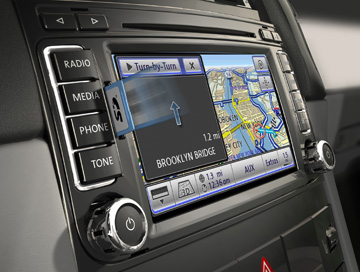
DEARBORN, MI – Capacitive switches, which sense a driver’s fingertips and execute commands without any moving parts, may be the new rage for vehicle interiors, but not everyone embraces the trend.
Frank Homann, vice president-North American Interior Electronics Solutions Group at Continental AG’s automotive unit, says 60% of consumers surveyed during a recent West Coast customer clinic rate the feature favorably. But ironically, the new technology scored overwhelmingly better with participants over 40 than with younger people.
“That was interesting, because we always thought the older generation was so used to mechanical buttons they would want to keep that (feature). But it was actually the opposite,” says Homann, whose group focuses on linking consumer electronics with automobile interiors.
Unlike mechanical switches, capacitive switches contain virtually no moving parts. A sensor located under an overlay with a foil layer in between detects the presence of a finger.
One example is the volume control on an iPod, where the touch wheel senses the user’s finger as it scrolls around the wheel.
So far, the technology has targeted cellular phones, music devices and concept cars. But it likely will begin appearing in more automotive applications by improving quality and reducing production costs.

Capacitive sensors would provide particular savings in the redesign of an interior faceplate, for example, because no tooling changes would be necessary. The buttons can be designed to include haptic, tactile or kinesthetic feedback, although that would increase costs, Homann says.
Perhaps nowhere will the technology play a greater role than on the next-generation human-machine interface (HMI), where capacitive switches free up designer space.
“You can come up with some cool designs,” Homann says. “So from the designers’ perspective, they’ll have new freedom.”
Interior suppliers are racing to design a next-generation HMI that blends design, technology, enjoyment and safety into a winning package.
However, outside of the luxury segment, consumers at Continental’s clinic say they are not willing to pay for capacitive switches.
“The clear answer was ‘no,’” Homann says during Continental’s Electronics University here, a briefing on emerging trends and technologies the supplier conducts for journalists annually.
As auto makers look to new knob and switch technologies to differentiate their interiors, Homann’s clinic also reveals some tried-and-true ideas still resonate. For example, consumers he surveyed found traditional knobs useful.
“Particularly when it comes to on/off and radio volume,” Homann says. “That’s the first button you find in a car, because it is the most-touched button.
Also scoring well were buttons integrated into touch screens, although Homann doubts whether consumers would rate them so highly outside a laboratory environment.
“I think people would actually feel different if they drove the vehicle and had to deal, especially in Michigan, with bad roads,” he says. “It may be difficult and they may do some things they really don’t want to do.”
Touch screens, in general, are well-received in the market. Even in Germany, where Homann says conservative consumers disdain fingerprints on the dash, well-executed touch screens, such as an HMI unit now appearing on the ’09 Volkswagen CC in North America, are drawing raves.
“It’s very intuitive, very easy to use,” Homann says of the unit. Buttons for general commands bookend a touch screen on which the driver executes more specific commands. “It’s so easy to use, and that’s where we’re getting a lot of great feedback.”
The HMI launched last year on all Volkswagen vehicles in Europe and Asia with navigation-equipped platforms. “Europe is catching up with (North America). People like it,” he says.
Another approach that proved popular with the Continental clinic was a touch wheel, although Homann again expresses reservations about its practicality.
“(It) actually did pretty good, because a lot of people there had an iPod and liked how the touch wheel worked. That, of course, influences the results.”
Continental also asked consumers to rate dual-screen technology, a concept that would allow drivers and passengers to share a center-stack screen but view different information or media. Homann says the technology was a homerun with the clinic.
“Everyone absolutely loved it and wanted to have it,” he recalls. “And very interesting here, they were absolutely willing to pay for it. There wasn’t one single person that said, ‘Nah, I don’t want to pay for it.’ People wanted it.”
As with any emerging technology, consumers found a few kinks, he notes. For example, one participant noticed a passenger in the middle of a rear seat would see a blurred screen.
Another consumer questioned whether such a technology could simultaneously execute commands from both the driver and passenger, such as downloading two different songs.
“But in general,” says Homann, “it was the hottest thing everyone wanted.”

